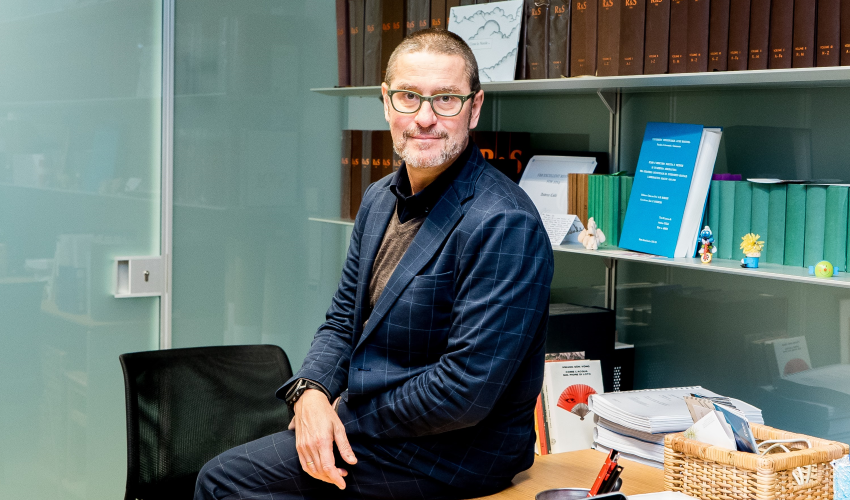
The New Silk Road Can Be Understood by Looking at the Past
THE CONTRAST WITH RUSSIA'S AMBITIONS, THE EXPANSION INTO AFRICA AND INDIA, AND OTHER SCENARIOS BEHIND THE CHINESE ONE BELT, ONE ROAD PROJECTby Andrea Colli, Department of Policy Analysis and Public Management
On January 1, 2017 a direct freight train link between Beijing and London started, which allows goods to travel cheaply across Asia in a couple of weeks. Behind this event there is a fascinating story of geopolitical changes, which history can help to understand for at least seven reasons. A first one is the obvious parallel with the “old” silk road, the ancient trade caravan which connected Asia to Europe, traveled by all sort of people crossing the dangerous lands between the Mediterranean and China. For Westerners, the symbol of all this has been Marco Polo, the Venetian merchant, who indeed traveled eastwards looking at the “core” of the world economy, Asia. Far from being the symbol of European supremacy, Polo (as well as Cristopher Columbus, later) was the witness of Asian primacy.
Second, the One-Belt-One-Road, or OBOR, project is located in the scenario of the “Great Game”, in which the Russian and the British Empires covertly clashed. The Chinese project is raising mixed feelings in Russia – it is a new geopolitical challenge to the Russian willingness to expand its influence, particularly in the Southern area, as once sought both by the Czarist, and Communist, empires. Third, the end of the Cold War coincided with the dramatic isolation of the Central former Soviet republics. The OBOR project is the chance for states such as Kazakhstan, Turkmenistan and others to re-connect themselves to the world economy. Fourth, the OBOR initiative involves at some point India, the Middle East and, in part, Africa, that is a large section of the postcolonial world. The idea of a peaceful coexistence is very familiar to the former colonies, which see China as a former colony successfully developed.
Fifth, the new idea of this Chinese-driven globalization has a reverse side. The relationship between China and South-East Asia, Africa, Central and South America is very controversial. Magazine and newspaper headlines are often blaming the “Chinese Empire” or “Imperialism” (quite ironically, given the past European performance in the matter). Sixth, the West has a new role in this process. In 2011, the US. former Secretary of State Hillary Clinton summarized this in the title chosen for an article published in Foreign Policy, “America’s Pacific Century”. According to Clinton the US must firmly keep its role as world “policeman”, adapting it however to a new geopolitical scenario gravitating around the Pacific region. The most recent changes in the US administration and in its foreign policy do not seem to point in this direction.
Seventh and last, the role of Europe. Western Europe has been very effective in dissipating, in a long civil war lasting from 1914 to 1945, the leading role she had built up over centuries, in the course of the so-called “Great Divergence”. The postwar miracle brought Europe again close to the center of world power – which had, however, implacably shifted across the Atlantic. The recent evolution in world geopolitics, an endemic economic crisis, and the lack of real political unity, however, has thus far not allowed it to reverse a marginalization worsened by mounting nationalism and populism. The new geopolitical order, in sum, seems to push Europe, again, after centuries, to the sideline.
The sole vestige of its imperial centrality remains the partition of the world established in 1851, the same year of London’s Great Exhibition, when Sir George Airy, the Seventh Royal Astronomer – the Astronomer of the most powerful Empire in the World, on which never the sun set - decided that the first meridian - the zero longitude-line which separated West and East and simultaneously marked the start of the Universal Day - passed through the circle of his telescope in the small London’s suburb of Greenwich.
Read more about this topic:
At the Center of Political Workings, article by Lanny Martin
The Theory of Secession. Article by Massimo Morelli
Why the Multinationals that Influence the World Are Born
Behind Western Intervention in the Fall of Regimes
In Europe the obstacle is not culture
How a Sentence Can Affect International Agreements
